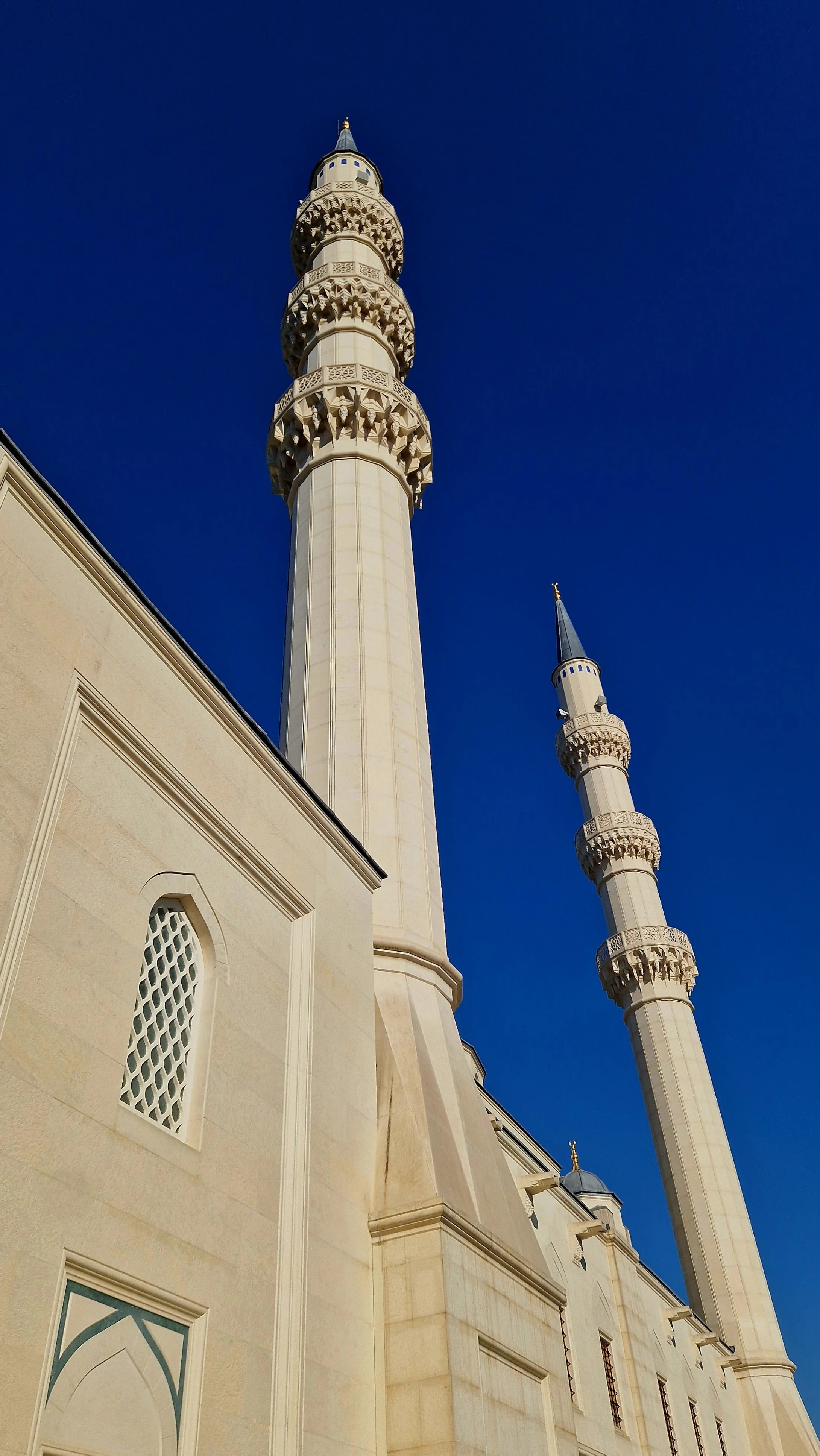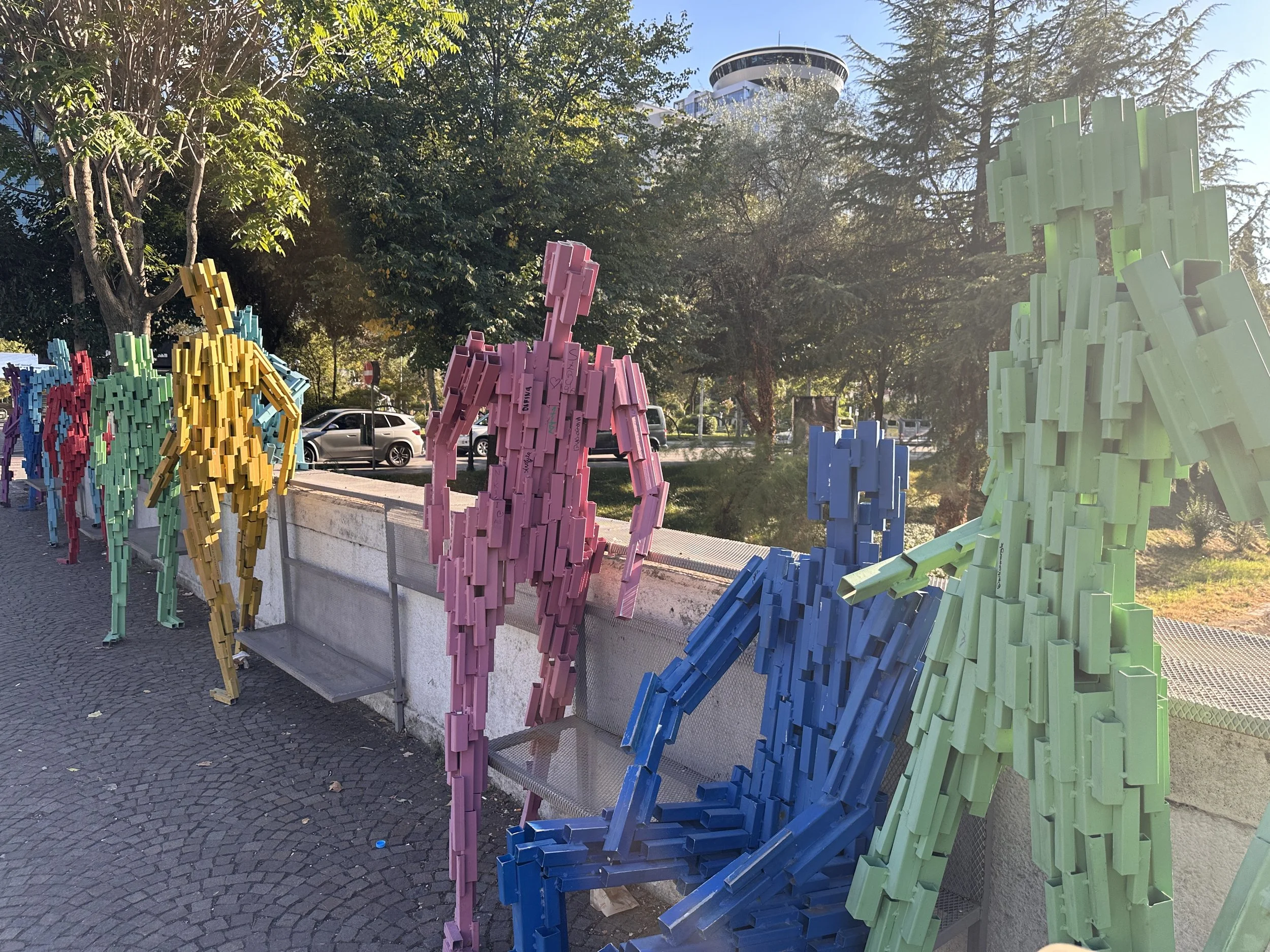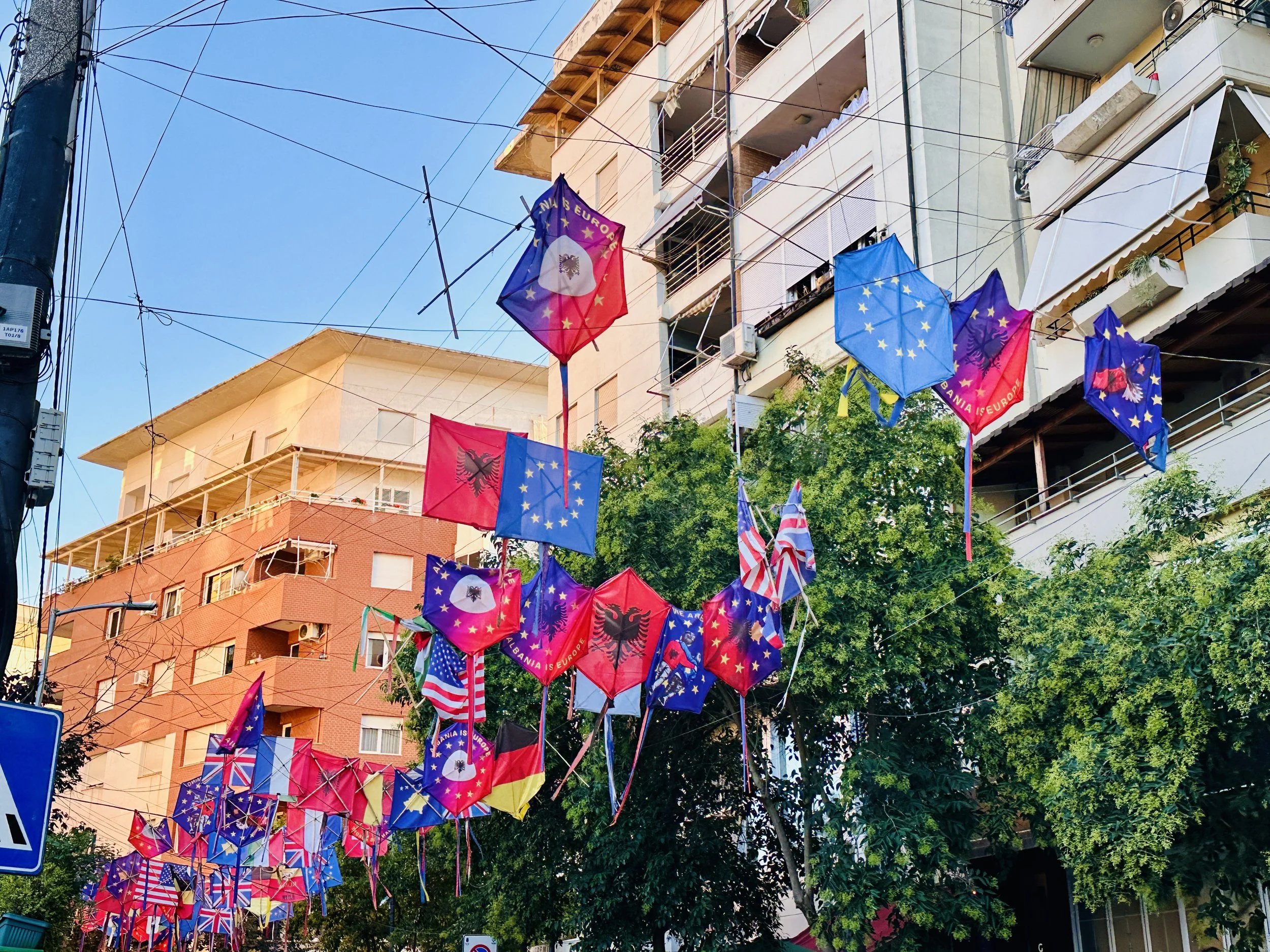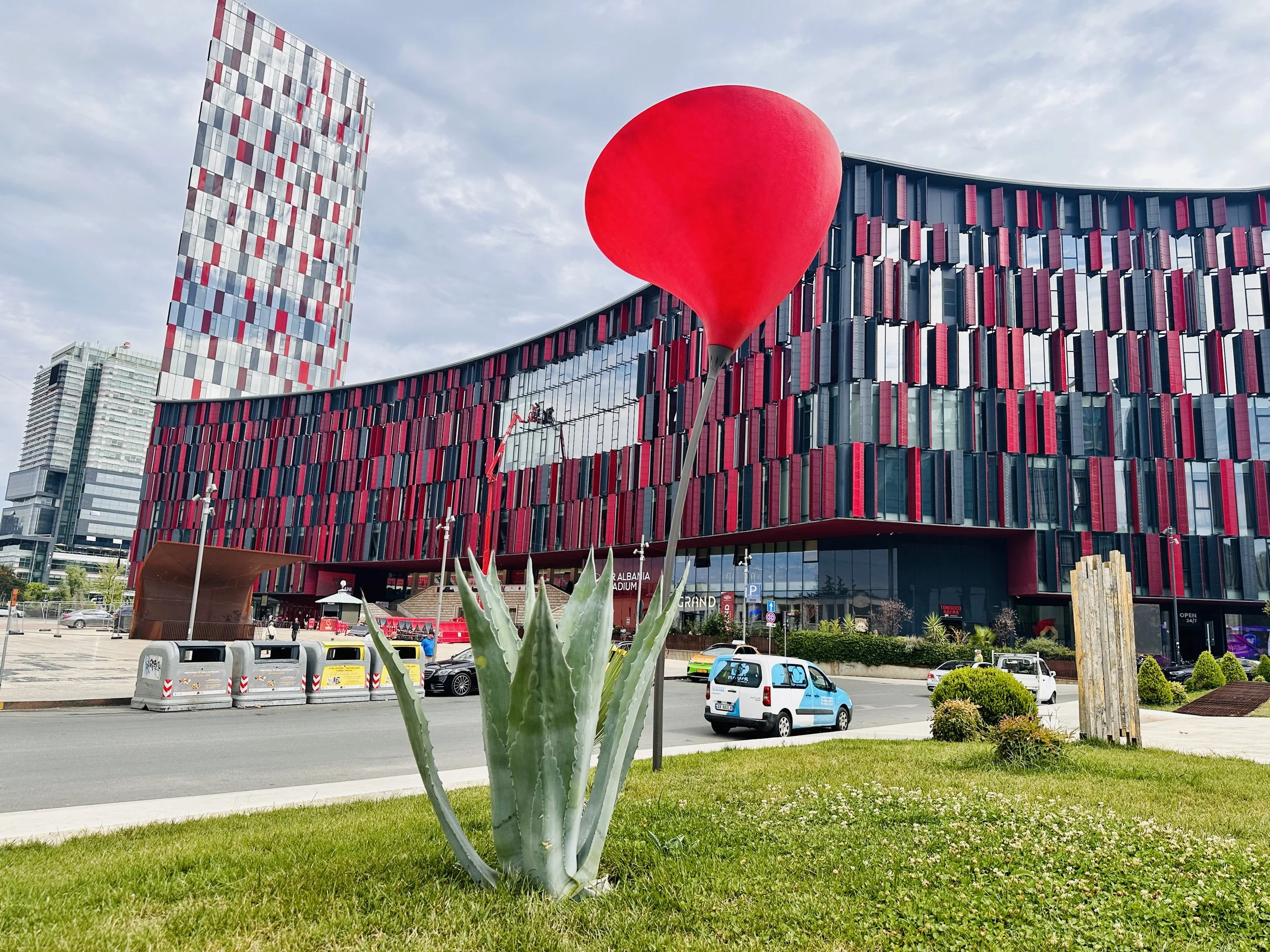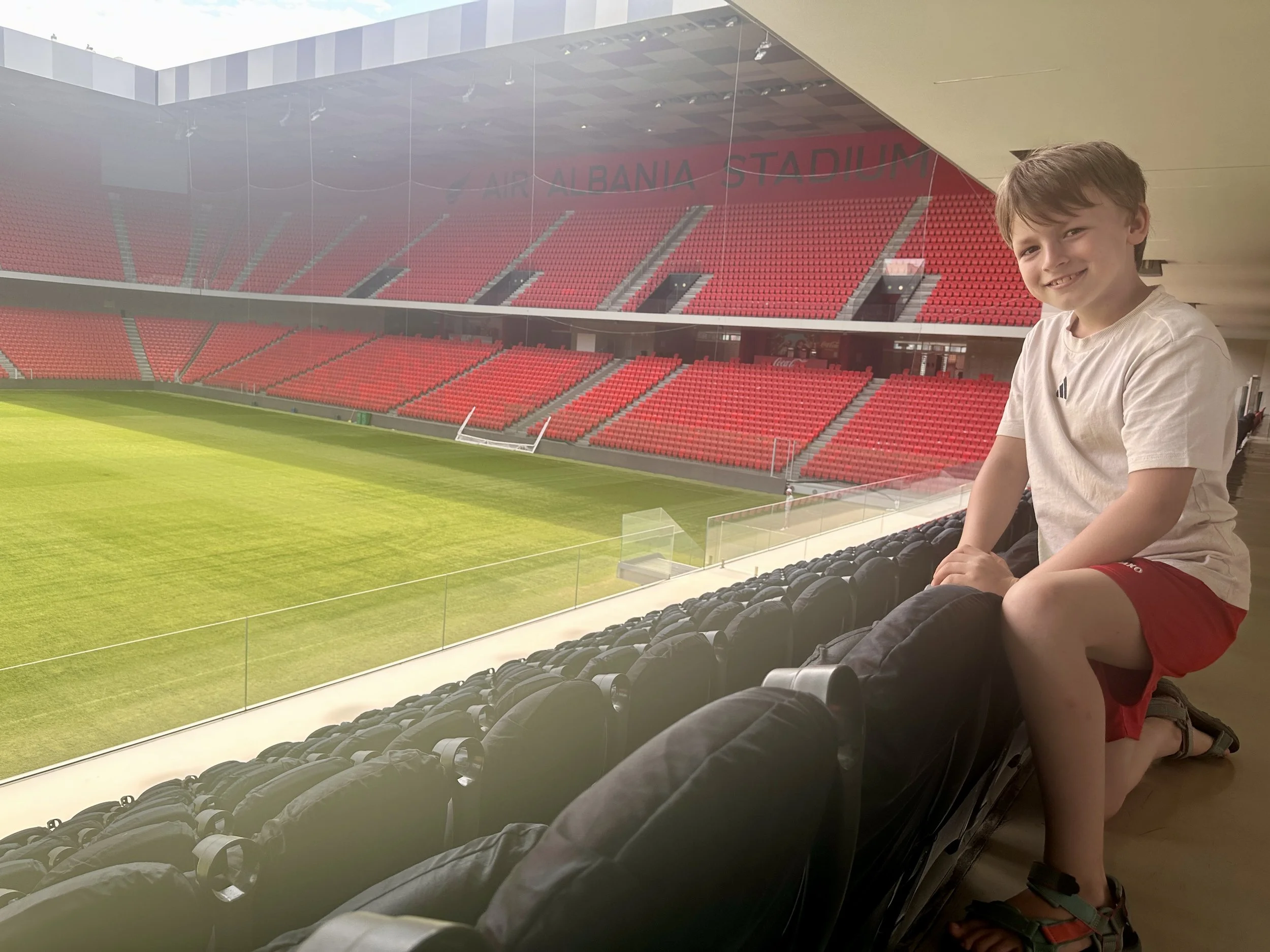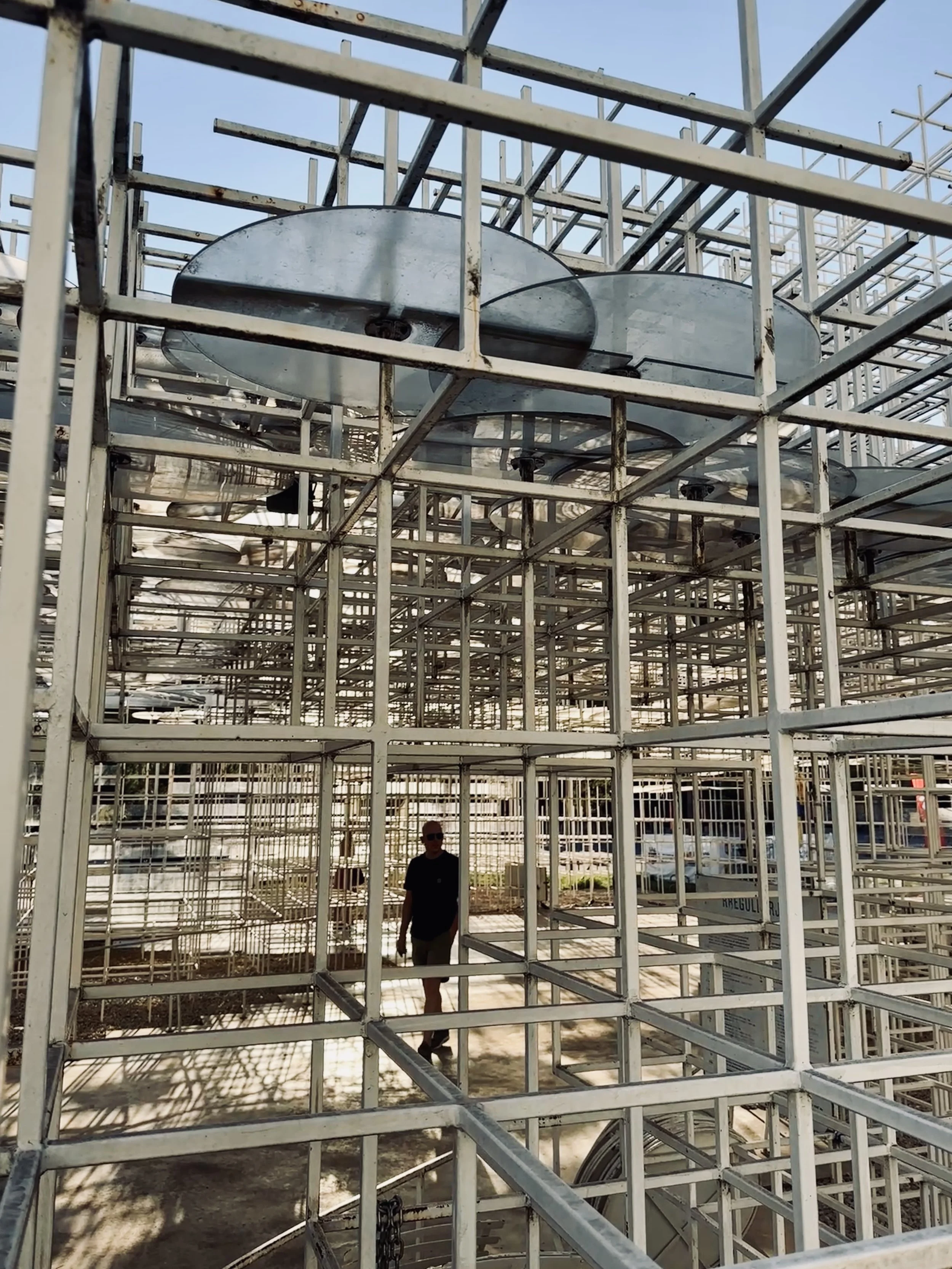
Tirana, Albania
The border crossing into Albania, country number 10 on our journey was the most tiresome so far, as it took us the best part of an hour to get into the country. From what we’ve read this was still fairly reasonable compared to what other travellers had to go through. The drive from Ohrid to Tirana was a decent one, otherwise. The roads were acceptable and the traffic was ok. We were still driving through nature when our satnav told us that we would reach our central Airbnb location in around 15 minutes, and all of a sudden just around the next corner, a big city appeared in front of us. We found an apartment via Airbnb, very central, for around 45 Euros per night. The usual setup, one bedroom and an extractable sofa in the living room. A setup we got used to over the last weeks. Our host was already waiting for us at the barrier to the residential area that the apartment was in. You could sense that she was new to the Airbnb-game, which actually was a nice change to the always anonymous locker boxes that you pick up the keys from. She took time to welcome us, showed us the apartment, explained a few things and even wanted to show us how to make a bed out of the sofa. That certainly wasn’t necessary, as we gained plenty of experience over the last 40 days of travelling. Even the towels were clearly unused in this apartment, and a few more indicators suggested that we were the first guests in this place.
After the usual car unpacking, we again, as in previous capitals we have visited, didn't wait long for our first walk through the city. It was already around 4 pm and we hadn’t had lunch, so we decided to visit a nearby microbrewery for a pint and some food. Actually, looking for microbreweries has proven to be a sensible travel recommendation, as they are usually positioned in some upcoming neighbourhoods that provide a fairly local vibe. Pan’s Taproom (https://www.instagram.com/taproombypans/?hl=en) gave us exactly that! This very nice semi-outdoor location fulfilled all our needs and gave us a nice foundation to further explore Tirana.
Tirana, compared to other capitals in the Balkan, is a fairly young city. While the site of the city has been inhabited since the Iron Age, it never played a major role until the 20th century. It was founded in 1614 by the Ottoman general Sulejman Pasha Bargjini, who built a mosque, a bakery, and a hammam. A fairly basic setup one would say. In 1912, Albania declared its independence from the Ottoman Empire, however, Tirana wasn’t the capital back then, as other Albanian cities, such as Durres or Shkodra were much bigger at the time. In 1920, Tirana was chosen as the capital, but not because of its size, but because of its central location in the country. After World War II, Envar Hoxha’s (https://en.wikipedia.org/wiki/Enver_Hoxha) communist regime commenced which led the country into a very dire, 4-decade long isolation. In 1967, Albania declared itself the world’s first atheist state, banning religion, destroying mosques and churches and becoming more and more isolated. When Russia opened up under Chrutschschov, Hoxha formed allies with China, but when China opened up to the West in the 70’s, Hoxha denounced Beijing, too, leaving Albania fully isolated to the outside world. Political opponents were imprisoned or executed and hundreds of thousands bunkers were built throughout the country, reflecting the paranoia of foreign invasion. Hoxha died in 1985 and when the communist rule collapsed at the beginning of the 90’s, Albania emerged as one of the poorest and most isolated countries in Europe.
All the above is hard to believe when you walk through Tirana today, as many large urban renewal projects have given the city a fairly contemporary look and feel. Compared to most other capitals we have visited in recent weeks, Tirana is actually quite green and friendly with many parks and colourful facades. The wide streets built under Russia’s influence have now dedicated bike lanes and the population appears to be relatively young. Once more, we took our first walk through the city on a Sunday evening and many inviting neighbourhoods were filled with packed bars and restaurants. The city was as lively as Sarajevo, which was our favourite city from the one’s we had visited in recent weeks. We went to the Skanerbeg Square (https://en.wikipedia.org/wiki/Skanderbeg_Square), where many students had gathered some 35 years ago to demonstrate for a peaceful revolution and walked up the Tirana Pyramid (https://en.wikipedia.org/wiki/Pyramid_of_Tirana) for a great view over the city.
On our second day, we went up the Tirana Clock Tower, which isn’t very high, but still allows a nice view over Skanderbeg Square. Afterwards, we past by the Air Albania Stadium, which is the relatively new national stadium of Albania, and they have a bar inside the stadium with a great view over the pitch. Just the right thing for our football obsessed Oskar. After a coffee/ Ice Tea break we continued to wander through some of the “hip neighbourhoods” of Tirana. The city itself doesn’t have that many sites to visit, but it was really inviting to just walk around and look through many little shops. In the afternoon, I took the kids to a playground around the corner, we also visited the Mosque of Namazgah (https://en.wikipedia.org/wiki/Namazgah_Mosque), which is the largest, and probably one of the most beautiful mosques of the Balkans. It was completed in 2024 and had a construction cost of around 30 million Euros, allowing 8.000 worshippers to pray inside and another 2.000 to pray outside. Once we picked up Sarah, who had been busy working on her business plan, we grabbed a small bite to eat and called it a night.
That was yesterday… Today, on August 26th, we drove to Shenjin which is on the Albanian seaside, but that’s going to be part of the next update!






